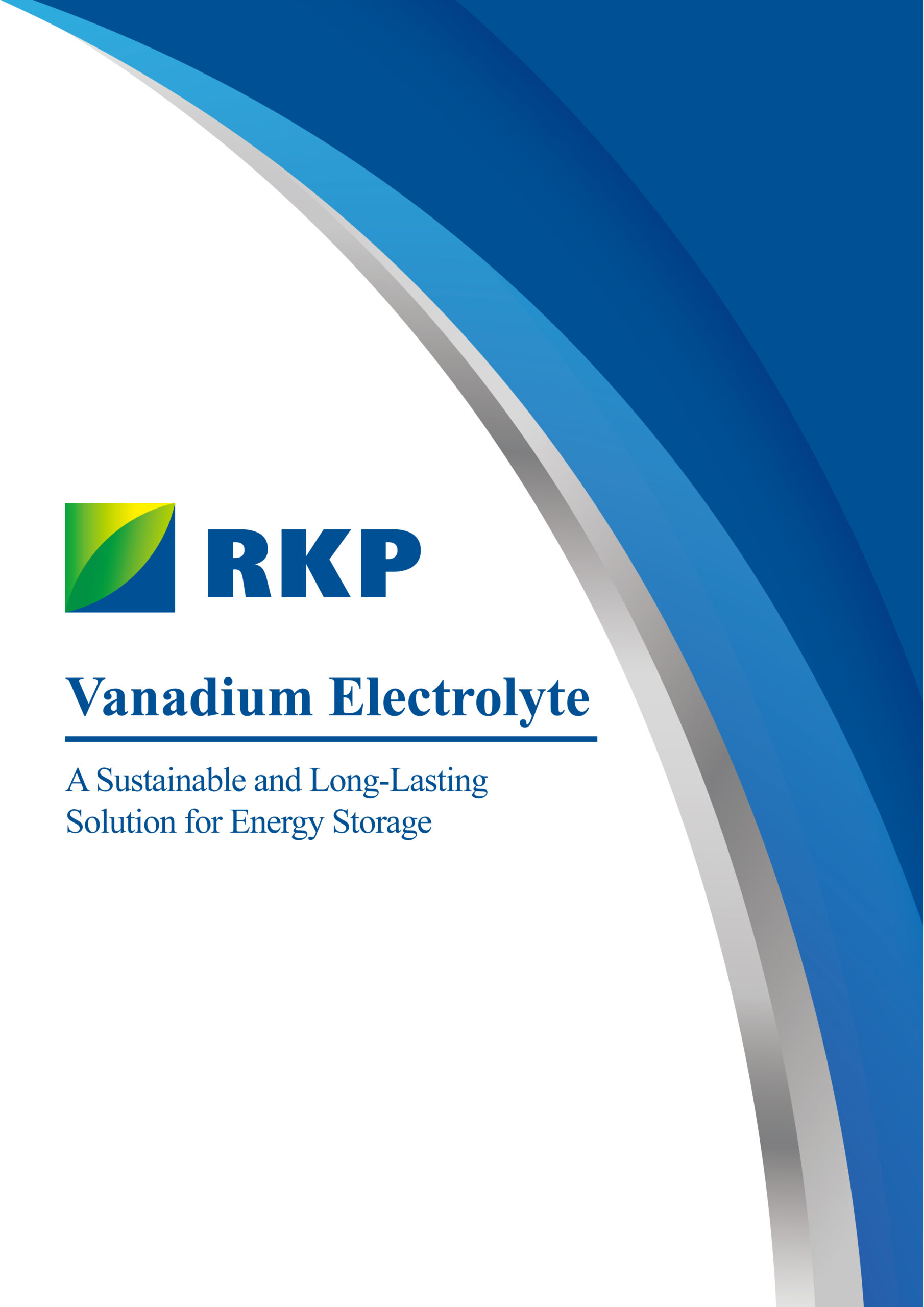
Überblick – Wiederverwendbarkeit und langlebige Eigenschaften des Vanadium-Elektrolyts
Vanadium-Elektrolyt weist eine außergewöhnliche Wiederverwendbarkeit und langlebige Eigenschaften auf, was ihn zu einer besonders effektiven Lösung für die Energiespeicherung macht. Diese Vorteile resultieren aus seiner inhärenten Stabilität und den grundlegenden elektrochemischen Mechanismen, die seine Reaktionen steuern. Als zentrales Energiespeichermedium in Vanadium-Redox-Flow-Batterien (VRFBs) besteht der Vanadium-Elektrolyt aus Vanadium-Ionen, einem unterstützenden Elektrolyt und Additiven. Die Vanadium-Ionen fungieren als aktives Material zur chemischen Energiespeicherung, während Wasserstoff-Ionen zwischen der positiven und negativen Elektrode hin- und herwandern, um die Ladungsbilanz aufrechtzuerhalten. Additive verbessern die Stabilität der Lösung und fördern effiziente elektrochemische Reaktionen. Da die Zusammensetzung des Elektrolyts an beiden Elektroden identisch ist, besteht kein Risiko einer Kreuzkontamination, selbst bei der Ionenmigration über lange Lade- und Entladezyklen hinweg. Die Wiederverwendbarkeit des Vanadium-Elektrolyts zeigt sich darin, dass es stabile chemische Eigenschaften mit minimalen Nebenreaktionen beibehält. Außerdem kann es durch Wiederherstellungsprozesse in seinen Ursprungszustand zurückversetzt werden. Mit ausgezeichneter chemischer Stabilität, hoher Leitfähigkeit und geringem Widerstand sorgt der Elektrolyt für einen stabilen Stromfluss, was ihn ideal für großskalige Energiespeicher macht. Diese Eigenschaften ermöglichen es VRFBs, wiederholt geladen und entladen zu werden, ohne nennenswerte Verschlechterung, was die langfristigen Betriebskosten effektiv senkt. Im Gegensatz zu Lithium-Ionen-Batterien, die durch Phasenänderungen strukturelle Schäden erleiden, bleibt der Vanadium-Elektrolyt während des gesamten Lade- und Entladevorgangs flüssig. Dies stellt sicher, dass eine Tiefentladung das System nicht beschädigt und trägt so zu einer verlängerten Betriebsdauer bei. Die lange Lebensdauer und Wiederverwendbarkeit des Vanadium-Elektrolyts unterstützen seine Anwendung im Energiespeichersektor maßgeblich. VRFBs bieten bedeutende Vorteile, darunter die unabhängige Skalierbarkeit von Leistung und Energie, schnelle Reaktionszeiten sowie hohe Sicherheitsstandards, wodurch sie ideal für Anwendungen wie Netzintegration und erneuerbare Energien sind.
Überblick – Wiederverwendbarkeit und langlebige Eigenschaften des Vanadium-Elektrolyts
Vanadium-Elektrolyt weist eine außergewöhnliche Wiederverwendbarkeit und langlebige Eigenschaften auf, was ihn zu einer besonders effektiven Lösung für die Energiespeicherung macht. Diese Vorteile resultieren aus seiner inhärenten Stabilität und den grundlegenden elektrochemischen Mechanismen, die seine Reaktionen steuern. Als zentrales Energiespeichermedium in Vanadium-Redox-Flow-Batterien (VRFBs) besteht der Vanadium-Elektrolyt aus Vanadium-Ionen, einem unterstützenden Elektrolyt und Additiven. Die Vanadium-Ionen fungieren als aktives Material zur chemischen Energiespeicherung, während Wasserstoff-Ionen zwischen der positiven und negativen Elektrode hin- und herwandern, um die Ladungsbilanz aufrechtzuerhalten. Additive verbessern die Stabilität der Lösung und fördern effiziente elektrochemische Reaktionen. Da die Zusammensetzung des Elektrolyts an beiden Elektroden identisch ist, besteht kein Risiko einer Kreuzkontamination, selbst bei der Ionenmigration über lange Lade- und Entladezyklen hinweg. Die Wiederverwendbarkeit des Vanadium-Elektrolyts zeigt sich darin, dass es stabile chemische Eigenschaften mit minimalen Nebenreaktionen beibehält. Außerdem kann es durch Wiederherstellungsprozesse in seinen Ursprungszustand zurückversetzt werden. Mit ausgezeichneter chemischer Stabilität, hoher Leitfähigkeit und geringem Widerstand sorgt der Elektrolyt für einen stabilen Stromfluss, was ihn ideal für großskalige Energiespeicher macht. Diese Eigenschaften ermöglichen es VRFBs, wiederholt geladen und entladen zu werden, ohne nennenswerte Verschlechterung, was die langfristigen Betriebskosten effektiv senkt. Im Gegensatz zu Lithium-Ionen-Batterien, die durch Phasenänderungen strukturelle Schäden erleiden, bleibt der Vanadium-Elektrolyt während des gesamten Lade- und Entladevorgangs flüssig. Dies stellt sicher, dass eine Tiefentladung das System nicht beschädigt und trägt so zu einer verlängerten Betriebsdauer bei. Die lange Lebensdauer und Wiederverwendbarkeit des Vanadium-Elektrolyts unterstützen seine Anwendung im Energiespeichersektor maßgeblich. VRFBs bieten bedeutende Vorteile, darunter die unabhängige Skalierbarkeit von Leistung und Energie, schnelle Reaktionszeiten sowie hohe Sicherheitsstandards, wodurch sie ideal für Anwendungen wie Netzintegration und erneuerbare Energien sind.
